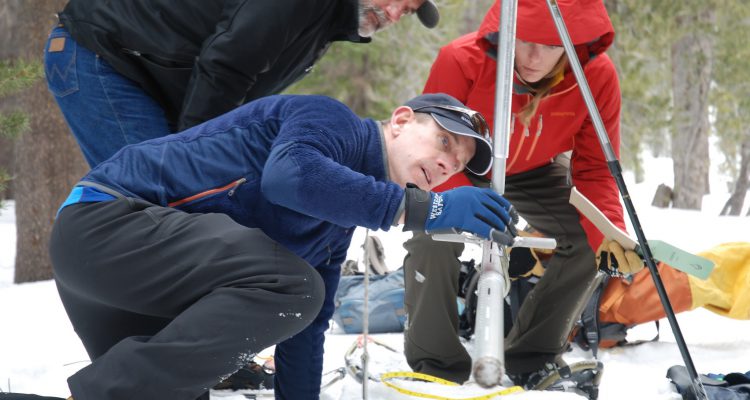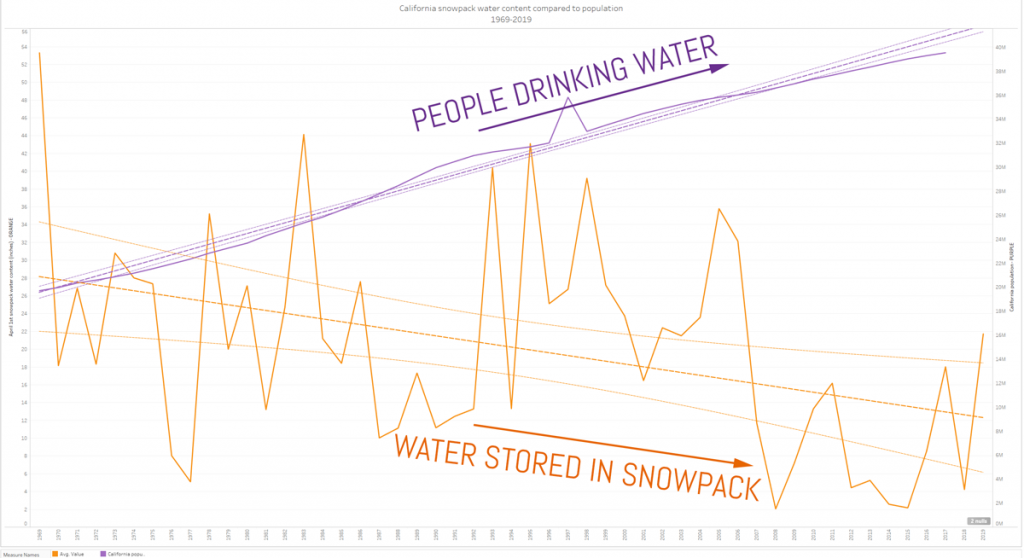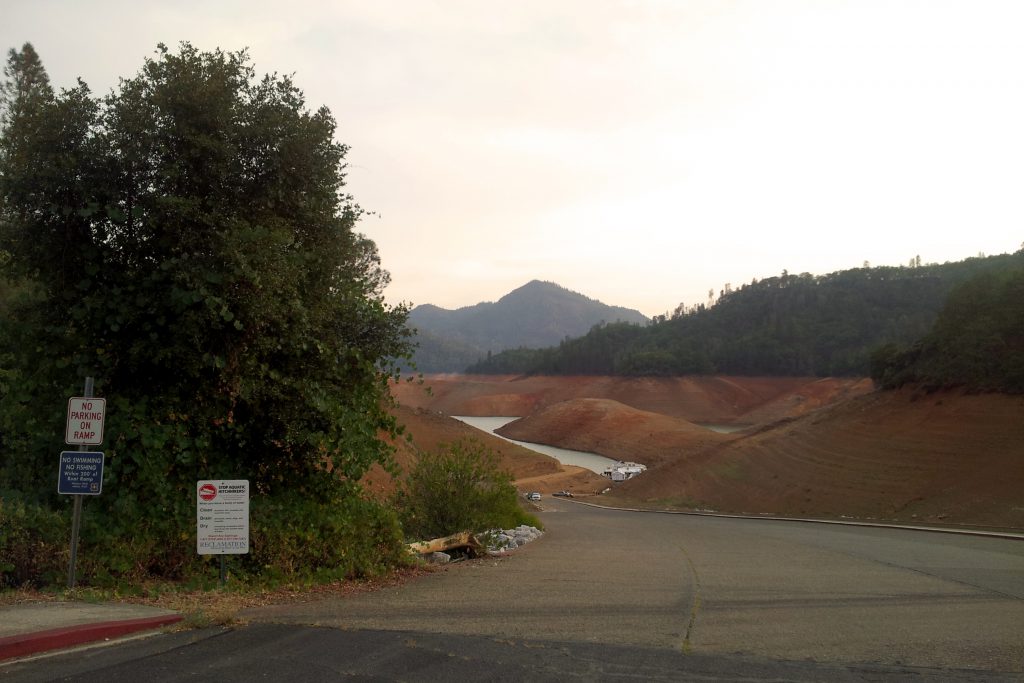By: Patrick W. Zimmerman
Sea level rise is the sexy aqueous climate change issue that’s grabbing all the headlines, periodically interrupted by disaster sensationalism every time a hurricane hits the US mainland or the West catches on fire. But it’s the shrinking snowpack that is driving the impending water crisis.
Think of the West’s water infrastructure as analogous to an electricity grid, but one that only produces power for 3-6 months every year and whose storage consists of a big bundle of really shitty batteries duct taped together. The snowpack is one of the major ways (along with reservoirs and groundwater aquifers) in which water is stored in the American West.
Why does storage matter to the water supply more than raw rainfall? Because of the 6 months out of the year when it doesn’t rain. That’s why.
The snowpack is a huge part of that storage system, as of 2015 accounting for on average 41% of the state’s total available water supply. So, sure, building more reservoirs is a potential long-term way to replace that. Raise your hand if you think any legislature is currently debating the remote possibility of doubling its reservoir storage capacity. No? No one? Yeah, us neither.
The question
Is snowpack becoming less reliable as a water storage system for California?
The short-short version
Yyyup. California’s population continues to rise steadily, and its snowpack water content continues to drop. That means that more people will have less water to split up with the US’s largest agricultural sector.
Buckle your seatbelts, more water fights are coming.
California’s snowpack over the last 40 years
The California Department of Water Resources is amazing. It has publicly available data for each of 405 snow stations going back to 1930 on (at least) a monthly basis, with many of them having daily snowpack water content measurements. For the rainfall geeks among you (or the people who are wondering if there’s going to be water rationing, again, this year), the DWR also has daily-updated plots of rainfall compared to historical averages and recent years.
Mouseover for details.
Ok, so there’s a steady decrease over the last 40 years in the snowpack, which means a declining water supply. Got it.
Mouseover for details.
Annnnddddd, there’s been a steady increase in California’s population. And that trend suddenly reversing would surprise everyone.
In case you missed it, those trendlines are moving in opposite directions. Here, we made some handy annotations to help:
So, ::checks math::, that leaves us with the following equation:
More people + less water = Big problem
Yeah, it’s really not that complicated.
How is California trying to solve this pending problem?
Well, since “keep the snow from melting” isn’t really an option, the answer is a bit up in the air.
One thing is for sure, planning for a shrinking snowpack needs to be better.
The current favorite water infrastructure project of California governor Gavin Newsom is the “California Water Fix and Eco Restore” Project, which amounts to building a couple of huge tunnels to carry water flowing out of the Sacramento River under the Delta and into California’s twin canal systems that transport water from the wet(ter) North to the dry South, the California Valley Project (a federally built canal system between the 1930s and 70s, mostly used for agriculture), and the California State Water Project (a state-built canal system in the 60s, mostly used for urban users).
The bottom line of the proposed project? It will help California move more water around, more efficiently, and might have less of an environmental impact on the Delta riparian ecosystem. But it doesn’t solve our storage problem, in any way. Additionally, it’s predicated on the (PWA-era) assumption that the Northern part of the state is a water-rich environment, and that the major challenge is to figure out how to get water from where it falls to where it’s used.
Guess what? That assumption might not be true in a warmer, more volatile climate (and it’s quite a risky assumption in a state with 37 million thirsty mouths and even more thirsty avocados). And, even if it does hold true, the delayed-release pillow of white-capped mountains is disappearing faster than you think.



No Comments on "The shrinking California snowpack is the lurking climate change issue that people aren’t talking about"